

0
+
Google Reviews


0
+
4.2 ( 2056 Ratings)
Teradata is a powerful relational database management system designed for large-scale data warehousing and analytics. It enables organizations to efficiently store, manage, and analyze massive volumes of data. With its high-speed parallel processing, Teradata supports complex queries and real-time decision-making. It’s widely used in industries for business intelligence and data-driven strategies.
Duration of Training : 40 Hours
Batch type : Weekdays/Weekends
Mode of Training : Classroom/Online/Corporate Training




Curriculum Designed by Experts
The Teradata Architecture
The Teradata Architecture
The Parsing Engine
The AMPs
Born to be parallel
The BYNET
Watch the Tera-Tom Video on Architecture
Collecting Statistics
Parsing Engine uses Statistics for the Plan
Columns and Indexes to Collect Statistics On
A Scalable Architecture
VProcs
Nodes and MPP
Watch the Tera-Tom Video on How AMPS store and process rows in Parallel
1.Fundamental Sql Using Select
Fundamental Structured Query Language (SQL)
Basic SELECT Command
WHERE Clause
Compound Comparisons (AND / OR)
Impact of NULL on Compound Comparisons
Using NOT in SQL Comparisons
Multiple Value Search (IN)
Using NOT IN
Using Quantifiers Versus IN
Multiple Value Range Search (BETWEEN)
Character String Search (LIKE)
Derived Columns
Creating a Column Alias Name
AS
NAMED
Naming conventions
Breaking Conventions
ORDER BY
TOP Rows Option
DISTINCT Function
2. On-Line Help And Show Commands
HELP commands
SET SESSION command
SHOW commands
EXPLAIN
Adding Comments
ANSI Comment
Teradata Comment
User Information Functions
ACCOUNT Function
DATABASE Function
SESSION Function
3. Data Conversions
Data Conversions
Data Types
CAST
Implied CAST
Formatted Data
Formatted Data for Day-Month-Year
Tricking the ODBC to Allow Formatted Data
TITLE Attribute for Data Columns
Transaction Modes
Case Sensitivity of Data
CASESPECIFIC
LOWER Function
UPPER Function
4. Aggregation
Aggregate Processing
Math Aggregates
The SUM Function
The AVG Function
The MIN Function
The MAX Function
The COUNT Function
Aggregates
Use of HAVING
Using the DISTINCT Function with Ao Performance Opportunities
5. Subquery Processing
Subquery
Using NOT IN
Using Quantifiers
Qualifying Table Names and Creating a Table Alias
Qualifying Column Names
Creating an Alias for a Table
Correlated Subquery Processing
Correlated Subquery To Find Duplicate Values
EXISTS
6. Join Processing
Join Processing
Original Join Syntax
Product Join
Newer ANSI Join Syntax
INNER JOIN
OUTER JOIN
LEFT OUTER JOIN
RIGHT OUTER JOIN
FULL OUTER JOIN
CROSS JOIN
Self Join
Alternative JOIN / ON Coding
Adding Residual Conditions to a Join
INNER JOIN
OUTER JOIN
OUTER JOIN Hints
Parallel Join Processing
Join Index Processing
7. Date And Time Processing
ANSI Standard DATE Reference
INTEGERDATE
ANSIDATE
DATEFORM
System Level Definition
User Level Definition
Session Level Declaration
DATE Processing
ADD_MONTHS
ANSI TIME
EXTRACT
Implied Extract of Day, Month and Year
ANSI TIMESTAMP
TIME ZONES
Setting TIME ZONES
Using TIME ZONES
Normalizing TIME ZONES
DATE and TIME Intervals
Using Intervals
INTERVAL Arithmetic with DATE and TIME
CAST Using Intervals
OVERLAPS
System Calendar
8. Character String Processing
Transforming Character Data
CHARACTERS Function
CHARACTER_LENGTH Function
OCTET_LENGTH Function
TRIM
SUBSTRING
SUBSTR
SUBSTRING and Numeric Data
POSITION
INDEX
SUBSTRING and POSITION or INDEX Used Together
Concatenation of Character Strings
9. Set Operators
Set Operators
Considerations for Using Set Operators
INTERSECT
UNION
EXCEPT
MINUS
Using Multiple Set Operators in a Single Request
10. Data Manipulation
Data Maintenance
Considerations for Data Maintenance
Safeguards
INSERT Command
Using Null for DEFAULT VALUES
INSERT / SELECT Command
Fast Path INSERT / SELECT
UPDATE Command
Fast Path UPDATE
DELETE Command
Fast Path DELETE
UPSERT
MERGE
ANSI Vs Teradata Transactions
Performance Issues with Data Maintenance
Impact of FALLBACK on Row Modification
Impact of PERMANENT JOURNAL Logging on Row Modification
Impact of Primary Index on Row Modification
Impact of Secondary Indices on Row Modification
11. Data Interrogation
Data Interrogation
NULLIFZERO
NULLIF
ZEROIFNULL
COALESCE
CASE
Flexible Comparisons within CASE
Comparison Operators within CASE
CASE for Horizontal Reporting
Nested CASE Expressions
CASE used with the other DML
Using CASE to avoid a join
12. View Processing
Views
Reasons to Use Views
Considerations for Creating Views
Creating and Using VIEWS
TOP Command allows ORDER BY in the View
Deleting Views
Modifying Views
Modifying Rows Using Views
DML Restrictions when using Views
INSERT using Views
UPDATE or DELETE using Views
WITH CHECK OPTION
Locking and Views
13. Data Definition Language
Creating Tables
Table Considerations
Maximum Columns per Table
Table Naming Conventions
CREATE TABLE
Column Data Types
Specifying the Database in a CREATE TABLE Statement
PRIMARY INDEX considerations
CREATE TABLE AS
Table Type Specifications of SET VS MULTISET
SET and MULTISET Tables
Protection Features
FALLBACK
Permanent Journal
BEFORE Journal
AFTER Journal
Internal Storage Options
DATABLOCKSIZE
FREESPACE PERCENTAGE
QUEUE Tables
Partitioned Primary Index (PPI)
SQL for Partitioned Primary Index (PPI)
Adding and Dropping Partitions
Column Attributes
Constraints
UNIQUE Constraint
CHECK Constraint
Referential Integrity (RI) Constraint
Defining Constraints at the Column level
Defining Constraints at the Table Level
Utilizing Default Values for a Table
Secondary Indices
CREATE TABLE to Copy an existing table
Altering a Table
Modifying the Primary Index Partitioning
Revalidating the Primary Index
Dropping a Table
Dropping a Table versus Deleting Rows
Renaming a Table
Creating Secondary via CREATE INDEX
Join Index
Collecting Statistics
Hashing Functions
HASHROW
HASHBUCKET
HASHAMP
HASHBAKAMP
14. Temporary Tables
Temporary Tables
Temporary Table Choices
Derived Tables
Derived Tables Using a Non-Recursive WITH
Derived Tables Using a Recursive WITH
Volatile Temporary Tables
Global Temporary Tables
GLOBAL Temporary Table Examples
General Practices for Temporary use Tables
1. BTEQ
Logging Onto Bteq Interactively
Logging Onto Bteq In A Script
Using Bteq To Submit Queries In Interactive Mode
The Brilliant Bteq With By Statement
Bteq Can Provide Grand Totals
The Four Types Of Bteq Exports
A Bteq Export Script
A Bteq Export Script In Report Mode
Output For Record Mode And Report Mode
Using Report Mode To Export A Csv File
Importing From A Csv File
Two Ways To Run A Bteq Script
Exporting Large Files In A Unix Mp-Ras System
Bteq Import Script
Importing A Comma Separated Csv File
Multiple Sessions In Bteq
Fast Path Inserts Using Bteq
Cool Commands In Bteq – Sidetitles
Using Bteq Conditional Logic With Errorcode
Bteq Commands
Sequence Control Commands
Format Control Commands
2. Fastload
Maximum amount of block utilities has changed!
Fastload has two phases
Acquisition phase 1
Fastload application phase 2
A sample fastload script
Referential integrity and load utility problems
Two ways to execute a fastload script
Building, executing or scheduling fastload with nexus
Building a fastload with nexus smartscript
The smartscript fastload builder
Executing fastload from the nexus chameleon
Output report from fastload
Recovering when fastload fails
Valid data types used in fastload
Fasload commands
3. Multiload
Maximum amount of block utilities has changed!
The five phases of multiload
A sample multiload script
Referential integrity and multiload problems
Supported input formats
A multiload that inserts and updates using
Two different input files
A multiload that inserts and updates using
Two different input files continued
A multiload that upserts
A multiload that upserts continued
A multiload that deletes (step 1 of 3)
A multiload that deletes (step 2 of 3)
A multiload that deletes (step 3 of 3)
Multiload imports won‘t work with nopi tables
Two easy ways to run a multiload
Building, executing or scheduling multiload with nexus
Building a multiload with nexus smartscript
The smartscript multiload builder
Executing your multiload script
The output report from multiload
Utility locks
Trouble shooting and restarting multiload
4. TPUMP
Limitations of tpump
A sample tpump script
Two easy ways to run a tpump
Building, executing or scheduling tpump with nexus
Building a tpump with nexus smartscript
The smartscript tpump builder
Executing your tpump script
Supported input formats
Tpump script with error treatment options
A tpump script that uses two input data files
A tpump upsert sample script
Fundamentals of the .begin statement
Pack
Rate
Serialize
Tpump commands and parameters
.Begin load parameters unique to tpump
Monitoring tpump
Handling errors in tpump using the error table
Common error codes and what they mean
Restarting tpump
Tpump and multiload comparison chart
5. Fastexport
Maximum amount of block utilities has changed!
How fastexport works
Fastexport supported operating systems
Fastexport
Fastexport enhancement – no spool
A fastexport in its simplest form
Fastexport script that joins two tables
Fastexport modes and formats
How indicators can hurt your fastload
How you can omit indicators in your fastexport
Create a fastload with indicators
A fastexport script using binary mode
Fastexport support and task commands
Task commands
Fastexport supported sql commands
Course completion certificate and Global Certifications are part of our all Master Program
Course completion certificate and Global Certifications are part of our all Master Program
Course completion certificate and Global Certifications are part of our all Master Program
REVIT ARCHITECTURE / REVIT MEP Course Training empowers you with cutting-edge skills in BIM modeling, 3D design, and efficient project coordination. Master the art of creating detailed architectural plans, MEP systems, and collaborative workflows. Enroll today to enhance your expertise, boost your productivity, and advance your career in the ever-growing design and construction industry!
REVIT ARCHITECTURE / REVIT MEP Course Training paves the way for careers in architecture, MEP design, and BIM coordination. Secure roles like BIM expert, draftsman, or project manager in leading firms. Gain expertise in design, analysis, and project execution. Enroll now to thrive in the booming construction industry and unlock endless career possibilities!
REVIT ARCHITECTURE / REVIT MEP Course Training integrates cloud adoption to revolutionize design workflows. With cloud-based BIM, experience seamless collaboration, secure data sharing, and real-time updates. Learn to manage projects remotely, improve productivity, and streamline operations. Enroll now to gain expertise in cloud technology and excel in the dynamic construction and design industry!
Unlock the potential of scalability and flexibility with REVIT ARCHITECTURE / REVIT MEP course training. Learn to design with precision, streamline workflows, and handle complex projects efficiently. Master Revit’s powerful BIM tools, enhance career prospects, and stay ahead in the dynamic AEC industry!
Excel in cost management with REVIT ARCHITECTURE / REVIT MEP course training. Master budgeting, reduce resource waste, and streamline processes using Revit’s advanced BIM tools. Gain hands-on expertise to manage project costs effectively, boost efficiency, and build a competitive edge in your AEC career!
Ensure security and compliance with REVIT ARCHITECTURE / REVIT MEP course training. Learn to manage sensitive project data, adhere to industry standards, and implement best practices in BIM workflows. Gain essential skills to deliver reliable, compliant designs in today’s regulated AEC environment!
Radical Technologies is the leading IT certification institute in Pune, offering a wide range of globally recognized certifications across various domains. With expert trainers and comprehensive course materials, it ensures that students gain in-depth knowledge and hands-on experience to excel in their careers. The institute’s certification programs are tailored to meet industry standards, helping professionals enhance their skillsets and boost their career prospects. From cloud technologies to data science, Radical Technologies covers it all, empowering individuals to stay ahead in the ever-evolving tech landscape. Achieve your professional goals with certifications that matter.
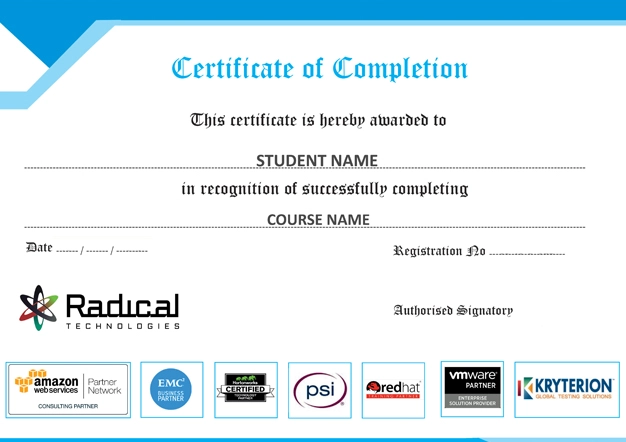





At Radical Technologies, we are committed to your success beyond the classroom. Our 100% Job Assistance program ensures that you are not only equipped with industry-relevant skills but also guided through the job placement process. With personalized resume building, interview preparation, and access to our extensive network of hiring partners, we help you take the next step confidently into your IT career. Join us and let your journey to a successful future begin with the right support.
At Radical Technologies, we ensure you’re ready to shine in any interview. Our comprehensive Interview Preparation program includes mock interviews, expert feedback, and tailored coaching sessions to build your confidence. Learn how to effectively communicate your skills, handle technical questions, and make a lasting impression on potential employers. With our guidance, you’ll walk into your interviews prepared and poised for success.
At Radical Technologies, we believe that a strong professional profile is key to standing out in the competitive IT industry. Our Profile Building services are designed to highlight your unique skills and experiences, crafting a resume and LinkedIn profile that resonate with employers. From tailored advice on showcasing your strengths to tips on optimizing your online presence, we provide the tools you need to make a lasting impression. Let us help you build a profile that opens doors to your dream career.


Infrastructure Provisioning
Implementing automated infrastructure provisioning and configuration management using Ansible. This may include setting up servers, networking devices, and other infrastructure components using playbooks and roles.


Applications Deployment
Automating the deployment and orchestration of applications across development, testing, and production environments. This could involve deploying web servers, databases. middleware, and other application components using Ansible


Continuous Integration
Integrating Ansible into CI/CD pipelines to automate software. build, test, and deployment processes. This may include automating the creation of build artifacts, running tests, and deploying applications to various environments.


Enrolling in the Revit MEP Certification in Bengaluru at Radical Technologies was a game-changer for my career. The instructors are experienced and approachable.
I took the Revit MEP Online Classes in Bengaluru, and the learning experience was seamless. The live sessions and recorded content made it easy to revisit concepts.
Radical Technologies is undoubtedly the best Revit MEP Institute in Bengaluru. Their training methodology is unmatched, and they provide excellent placement support.
The Revit MEP Online Course in Bengaluru offered by Radical Technologies allowed me to learn at my own pace without compromising quality.
If you're looking for Revit MEP Classes in Bengaluru, Radical Technologies is the right choice. Their detailed curriculum and project-based training are very effective.
The Revit MEP Corporate Training in Bengaluru conducted by Radical Technologies helped our team upskill quickly and efficiently. We highly recommend them.
I joined the Revit MEP Online Training in Bengaluru, and it was worth every penny. The trainers clarified all my doubts and provided excellent resources.
Radical Technologies offers the best Revit MEP Training in Bengaluru. Their real-time project work gave me the confidence to handle complex designs.
The Revit MEP Certification in Bengaluru from Radical Technologies added tremendous value to my resume and helped me secure a better job.
The instructors at Radical Technologies make learning easy. The Revit MEP Course in Bengaluru was comprehensive and well-paced.
I was impressed by the quality of the Revit MEP Online Certification in Bengaluru. The content was industry-relevant and up-to-date.
Radical Technologies’ Revit MEP Online Course in Bengaluru is perfect for working professionals. The flexible schedule allowed me to balance work and study.
The Revit MEP Classes in Bengaluru at Radical Technologies are highly interactive. The trainers are supportive and knowledgeable.
I had a great learning experience with the Revit MEP Online Classes in Bengaluru. The trainers ensured we understood the concepts thoroughly.
Radical Technologies is the best Revit MEP Institute in Bengaluru for anyone looking to start a career in building design and modeling.
The Revit MEP Corporate Training in Bengaluru delivered by Radical Technologies exceeded our expectations. The team became much more efficient in using BIM tools.
I joined the Revit MEP Online Training in Bengaluru to upgrade my skills, and it was an excellent decision. The trainers were very patient and knowledgeable.
Thanks to the Revit MEP Course in Bengaluru at Radical Technologies, I was able to complete a live project confidently during my training period.
The Revit MEP Certification in Bengaluru from Radical Technologies opened new career opportunities for me. The placement support was very helpful.
I opted for the Revit MEP Online Course in Bengaluru, and I loved the flexibility it offered. The content delivery was smooth and detailed.
Radical Technologies provides top-notch Revit MEP Training in Bengaluru. The practical sessions gave me the confidence to handle industry challenges.
The Revit MEP Online Certification in Bengaluru I completed at Radical Technologies gave me a competitive edge in my job search.
Radical Technologies offers the best Revit MEP Classes in Bengaluru with an updated syllabus and expert trainers. Highly recommended!
I took the Revit MEP Online Classes in Bengaluru, and the experience was amazing. The trainers are industry professionals who share real-world insights.
















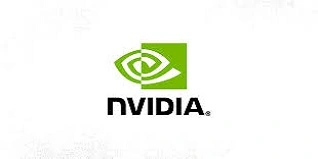

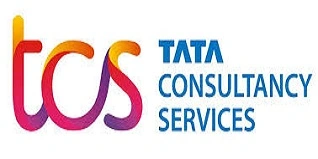







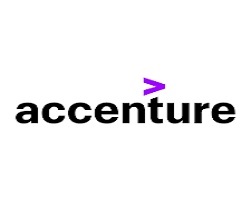

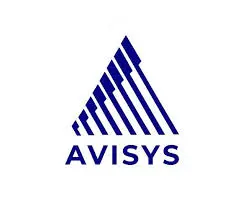

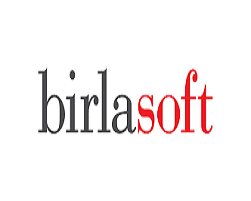









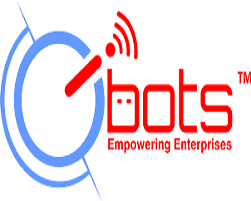

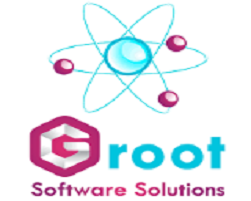







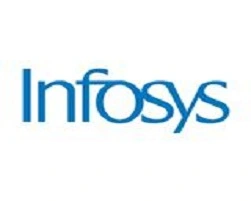

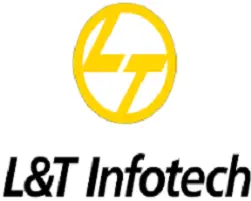

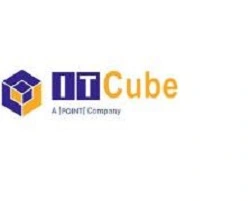



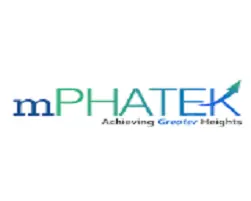

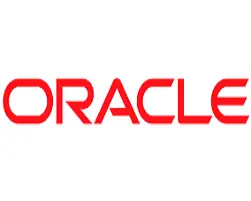







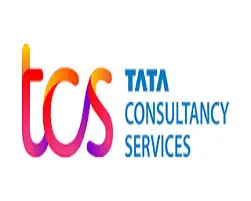





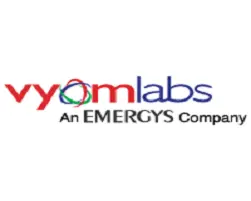



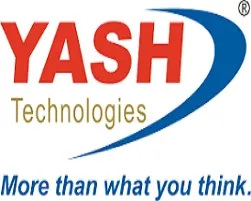

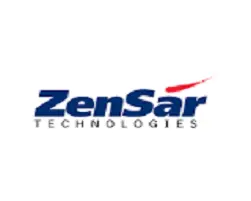

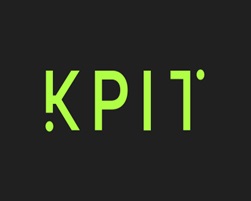



Revit MEP (Mechanical, Electrical, and Plumbing) is a Building Information Modeling (BIM) software developed by Autodesk. It is used to design, model, and coordinate mechanical, electrical, and plumbing systems in a building. Revit MEP allows engineers to create detailed 3D models, perform system analysis, and generate accurate documentation for construction projects.
Revit MEP provides a unified platform where mechanical, electrical, and plumbing teams can work on the same model. It integrates with cloud-based tools like Autodesk BIM 360, enabling real-time collaboration, design coordination, and conflict resolution among all project stakeholders.
Key features of Revit MEP include parametric components, clash detection, automated documentation, energy analysis tools, and integrated workflows. These features streamline the design process, enhance accuracy, and reduce errors.
Yes, Revit MEP includes energy analysis tools that allow designers to evaluate energy efficiency and optimize building systems. It supports green building certifications like LEED by enabling simulations for heating, cooling, lighting, and water usage.
Revit MEP is widely used in industries such as construction, architecture, HVAC engineering, electrical design, plumbing, and fire protection. It is also valuable for facility management and sustainability-focused projects.
Revit MEP uses built-in clash detection tools to identify conflicts between different systems (e.g., ducts, pipes, and electrical conduits) within the 3D model. This helps resolve issues during the design phase, reducing costly rework during construction.
Revit Architecture is focused on architectural design, including walls, roofs, and floor plans. Revit MEP, on the other hand, specializes in mechanical, electrical, and plumbing system design, analysis, and coordination. Both tools can work together to create a complete building model.
Yes, Revit MEP integrates seamlessly with other Autodesk products such as AutoCAD, Navisworks, and BIM 360. This integration allows for better workflow management, model collaboration, and project visualization.
Yes, Revit MEP is suitable for projects of all sizes. Its scalability allows it to be used for designing small residential buildings as well as large commercial and industrial complexes
Families in Revit MEP are pre-defined or custom parametric components used to represent system elements such as ducts, pipes, electrical fixtures, and equipment. These families can be modified to meet specific project requirements and reused across projects.
Revit MEP generates schedules, material takeoffs, and construction drawings directly from the 3D model. This automation ensures documentation is accurate, consistent, and updated in real-time as the design evolves.
Yes, Revit MEP is an excellent tool for retrofitting projects. Engineers can use the software to create models of existing systems, analyze their performance, and design upgrades or replacements to improve efficiency.
Revit MEP requires a powerful computer with a multi-core processor, a dedicated graphics card, and at least 16GB of RAM. For optimal performance, Autodesk recommends running the software on Windows 10 with a 64-bit operating system.
Yes, Radical Technologies offers flexible scheduling options for the Redhat Linux Course in Bangalore, including weekday and weekend classes to accommodate different schedules.
Revit MEP generates accurate material takeoffs and schedules, which can be used to estimate project costs. By linking the BIM model to cost estimation software, users can track budgets and make adjustments during the design phase to stay within financial constrain
Ambegaon Budruk | Aundh | Baner | Bavdhan Khurd | Bavdhan Budruk | Balewadi | Shivajinagar | Bibvewadi | Bhugaon | Bhukum | Dhankawadi | Dhanori | Dhayari | Erandwane | Fursungi | Ghorpadi | Hadapsar | Hingne Khurd | Karve Nagar | Kalas | Katraj | Khadki | Kharadi | Kondhwa | Koregaon Park | Kothrud | Lohagaon | Manjri | Markal | Mohammed Wadi | Mundhwa | Nanded | Parvati (Parvati Hill) | Panmala | Pashan | Pirangut | Shivane | Sus | Undri | Vishrantwadi | Vitthalwadi | Vadgaon Khurd | Vadgaon Budruk | Vadgaon Sheri | Wagholi | Wanwadi | Warje | Yerwada | Akurdi | Bhosari | Chakan | Charholi Budruk | Chikhli | Chimbali | Chinchwad | Dapodi | Dehu Road | Dighi | Dudulgaon | Hinjawadi | Kalewadi | Kasarwadi | Maan | Moshi | Phugewadi | Pimple Gurav | Pimple Nilakh | Pimple Saudagar | Pimpri | Ravet | Rahatani | Sangvi | Talawade | Tathawade | Thergaon | Wakad
I had an amazing experience with this service. The team was incredibly supportive and attentive to my needs. The quality of the work exceeded my expectations. I would highly recommend this to anyone looking for reliable and professional service."
I had an amazing experience with this service. The team was incredibly supportive and attentive to my needs. The quality of the work exceeded my expectations. I would highly recommend this to anyone looking for reliable and professional service."
I had an amazing experience with this service. The team was incredibly supportive and attentive to my needs. The quality of the work exceeded my expectations. I would highly recommend this to anyone looking for reliable and professional service."
I had an amazing experience with this service. The team was incredibly supportive and attentive to my needs. The quality of the work exceeded my expectations. I would highly recommend this to anyone looking for reliable and professional service."
I had an amazing experience with this service. The team was incredibly supportive and attentive to my needs. The quality of the work exceeded my expectations. I would highly recommend this to anyone looking for reliable and professional service."
Revit MEP (Mechanical, Electrical, and Plumbing) is a robust Building Information Modeling (BIM) software developed by Autodesk. It is specifically designed for engineers, designers, and contractors to streamline the design, documentation, and collaboration processes for building systems. Revit MEP is a cornerstone tool for those looking to create intelligent 3D models that integrate mechanical, electrical, and plumbing systems seamlessly within a building’s architectural framework.
Integrated Design Environment
Revit MEP offers an integrated workspace where mechanical, electrical, and plumbing systems can be designed collaboratively within a single model. This integration ensures that all disciplines are aligned and potential clashes are identified early in the design phase.
Parametric Components
The software enables the use of parametric components, or “families,” which are versatile elements that can be customized. These components allow users to efficiently adapt designs to meet specific project requirements, saving time and effort.
Clash Detection and Coordination
Revit MEP provides advanced clash detection capabilities. By identifying and resolving conflicts between different building systems during the design phase, the software reduces costly rework during construction.
Automated Documentation
With Revit MEP, generating accurate and detailed documentation is automated. Users can create schedules, drawings, and material takeoffs directly from the 3D model, ensuring consistency and accuracy.
Energy Analysis Tools
The software includes tools for performing energy analysis, helping designers create sustainable and energy-efficient systems. Revit MEP supports calculations for heating, cooling, and lighting, which aids in compliance with green building standards.
Collaborative Workflows
Revit MEP supports collaborative workflows through cloud-based integration with Autodesk BIM 360. Teams can share models, review designs, and track changes in real-time, enhancing project efficiency.
Enhanced Productivity
By automating repetitive tasks and reducing manual errors, Revit MEP allows professionals to focus on innovation and quality. The software improves project delivery timelines and lowers overall costs.
Improved Visualization
With its 3D modeling capabilities, Revit MEP provides a detailed view of building systems, making it easier to visualize the final output. This helps stakeholders better understand the design and make informed decisions.
Sustainability Integration
The ability to simulate energy performance and optimize system designs helps in creating eco-friendly buildings. Revit MEP aligns with global sustainability standards, including LEED and BREEAM.
Error Reduction
Through real-time collaboration and advanced coordination tools, Revit MEP minimizes errors and omissions, which can lead to expensive rework during construction.
Flexibility and Scalability
Whether you’re designing a small residential project or a large commercial complex, Revit MEP scales to meet the needs of diverse projects. Its adaptability makes it a preferred choice across industries.
Revit MEP, a specialized Building Information Modeling (BIM) software from Autodesk, is widely used in designing, analyzing, and documenting mechanical, electrical, and plumbing systems in buildings. Its versatile features and capabilities make it a preferred choice for professionals across multiple industries. Below are the key applications of Revit MEP:
1. HVAC System Design
Revit MEP enables detailed design, analysis, and visualization of Heating, Ventilation, and Air Conditioning (HVAC) systems. Engineers can create accurate ductwork layouts, airflow paths, and equipment placements. The software also helps perform load calculations, ensuring optimal system efficiency and compliance with energy standards.
2. Electrical Systems Design
Revit MEP is extensively used for designing electrical layouts, including wiring diagrams, circuit boards, and panel schedules. It allows engineers to plan and simulate power distribution systems, lighting designs, and emergency systems while ensuring compliance with regional electrical codes and safety standards.
3. Plumbing System Design
Plumbing engineers utilize Revit MEP to design and analyze water distribution and drainage systems. The software provides tools to model complex piping networks, calculate flow rates, and ensure proper placement of fixtures like sinks, faucets, and valves. This results in efficient water usage and system reliability.
4. Fire Protection System Design
Designing fire protection systems is a critical application of Revit MEP. Engineers can layout sprinkler systems, design pipe routing, and place fire suppression equipment accurately. Its clash detection feature ensures that fire protection systems do not interfere with other building components.
5. Energy Analysis and Sustainable Design
Revit MEP supports energy simulation and analysis, making it a valuable tool for designing energy-efficient systems. Engineers can evaluate heating and cooling loads, simulate lighting efficiency, and optimize building systems to align with green building certifications like LEED or BREEAM.
6. Clash Detection and Coordination
One of Revit MEP’s standout features is its ability to perform clash detection between mechanical, electrical, and plumbing systems. This ensures that all systems are seamlessly integrated into the building design, reducing errors and avoiding costly rework during construction.
7. Documentation and Scheduling
Revit MEP automates the creation of detailed documentation, such as schedules, material takeoffs, and 2D drawings, directly from the 3D model. This ensures accuracy and consistency while saving time during project planning and execution.
8. Collaboration and Workflow Optimization
Revit MEP supports collaborative workflows, enabling multiple stakeholders—such as architects, structural engineers, and contractors—to work on a unified model. This streamlines communication, ensures coordination, and enhances overall project efficiency.
9. Custom Component Design
The software allows engineers to create custom parametric components or “families,” tailored to specific project needs. This feature is particularly useful for projects that require unique system designs or specialized equipment.
10. Facility Management Integration
Revit MEP models can be integrated into facility management systems for post-construction operations. The detailed data embedded in the BIM model aids in maintenance planning, asset tracking, and lifecycle management of building systems.
Radical Technologies is the leading institute in Bengaluru for comprehensive Revit MEP Training, offering industry-focused courses to help students and professionals excel in the field of Building Information Modeling (BIM). With a proven track record of delivering top-notch training, we are committed to providing unparalleled learning experiences through expert-led sessions and hands-on projects.
Our Revit MEP Course in Bengaluru is designed to equip learners with practical skills and in-depth knowledge of mechanical, electrical, and plumbing systems. We take pride in being the preferred choice for individuals seeking to advance their careers through our Revit MEP Certification in Bengaluru and placement-focused training programs.
Experienced Trainers: Our instructors are industry experts with years of hands-on experience in Revit MEP and BIM projects.
Real-World Projects: We emphasize project-based learning, ensuring our students gain practical expertise.
Placement Support: Our dedicated placement team connects you with top companies, helping you kickstart or advance your career.
Flexible Learning Options: Whether you prefer classroom sessions or online learning, we have options tailored to your needs.
At Radical Technologies, we are more than just a Revit MEP Institute in Bengaluru; we are your partners in professional growth. Join us today and take the first step towards mastering Revit MEP and excelling in the competitive AEC (Architecture, Engineering, and Construction) industry.
For more information on our Revit MEP Training in Bengaluru, contact us today!


(Our Team will call you to discuss the Fees)
The Revit MEP Course in Bengaluru at Radical Technologies was well-structured and highly practical. The hands-on approach helped me gain real-world skills.